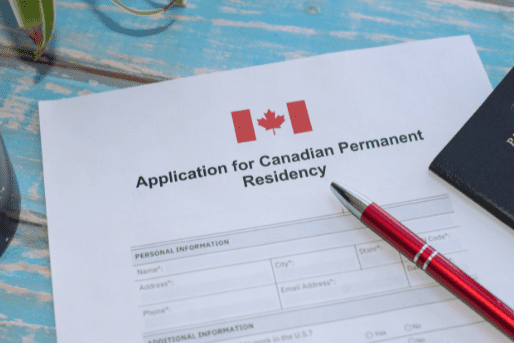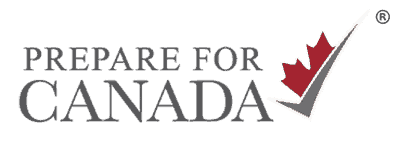
The PR process in Canada is designed to help immigrants come to the country as easily as possible. Immigrating to Canada is not hard if you understand the Permanent Residence, or PR process in Canada and how to apply. How your Canadian journey will unfold depends greatly on how you decide to pursue your PR in Canada. In this article, you’ll learn about the PR process and how to apply for Canada’s PR status.
What is Permanent Resident Status?
The Canadian government can give Permanent Residence status to someone who is not a Canadian citizen. As a PR, it means that you have the right to live and work in Canada for as long as you wish. And, once you have your PR, it cannot be taken away from you unless you commit a serious crime. As long as you follow all the laws, you will be eligible to renew your PR when it expires.
There are many benefits when you obtain PR status. For instance, you’ll have access to Canada’s healthcare system as well as the benefits the Canadian government has for immigrants and residents. Some of these services include a free library card for your public library, access to free healthcare, and permission to live, work, or visit any part of Canada.
Different Pathways to Follow the PR Process in Canada
How to Apply for Canada PR
The Canadian government currently has over 80 ways to immigrate to Canada! Each of these pathways is designed for specific groups of people. Below is an overview of the most common ways to apply for Canada PR and follow the PR process in Canada.
Express Entry System
Advertisement:
Express Entry is an online immigration system used to manage any applications under the:
- Federal Skilled Worker Class (FSWC)
- Federal Skilled Trades Class (FSTC)
- Canadian Experience Class (CEC).
If you can meet the criteria for any of these programs, you can apply for a PR through Express Entry.
In simple words, Express Entry is a system used to get skilled workers to Canada. These workers could already be living in Canada on a work permit or they could be skilled workers from another country. Each of the programs under Express Entry has its own criteria. You can learn more about the minimum requirements for each Express Entry program by clicking here.

Related Posts:
Startup Visa Canada: Another Route to PR
Cities in Canada | Top 10 Ranking Cities in 2021
Advertisement:
What to Know About Living in Barrie, Ontario
Building Credit History in Canada
Chiropractic Employment & Job Requirements in Canada
Settle in Canada with Confidence and Ease
What is the Comprehensive Ranking System Score?
If you meet the minimum requirements for Express Entry, you will be put into a pool with thousands of other candidates from around the world. At this point, you will receive a Comprehensive Ranking System (CRS) score. Your CRS score considers factors such as:
- Age
- Work experience
- Valid job offer in Canada
- Language skills in either English or French
- Education.
Your CRS score can be anywhere between 0 and 1200. A minimum CRS score will vary from time to time but anywhere above 500 is usually a good score.
The reason minimum CRS scores fluctuate is that you are ranked against other candidates in the Express Entry Pool. And you will be invited to apply for PR only if you score higher than most of the other candidates. So, some people don’t like the Express Entry system because it is highly competitive.
If you rank above the cut-off, you will receive an Invitation to Apply (ITA). Once you get your ITA, you will be eligible to apply for a PR in Canada. If you rank below the cut-off, you will need to improve your CRS score. Some ways to increase your score include:
- gaining work experience
- getting a valid job offer in Canada.
Another way to boost your CRS score is through the Provincial Nominee Program (PNP).
PR Process and the Provincial Nominee Program
If you fall below the CRS score cut-off in the Express Entry Pool and don’t receive an ITA, you could apply for a Provincial Nominee Program (PNP) in Canada.
A PNP allows the provinces to nominate certain people in the express entry pool to immigrate to their province. The nominees will get their PR but once they immigrate to Canada, they can only land in the province that nominated them. Furthermore, they must live in that province for a certain period of time, usually two years.
If you get nominated by a province through PNP, you get an additional 600 points added to your Express Entry Profile. This basically guarantees that you will receive an ITA for permanent residency in Canada. Using this PR process in Canada is a great way to boost your CRS score.
Each province has its own PNP. For example, Alberta’s PNP program is called the Alberta Immigrant Nominee Program (AINP). However, Quebec does not have a PNP. Quebec has its own requirements for immigrants that want to settle in Quebec.
When you are looking to immigrate through PNP, you will have to stay alert. PNPs are not always open for every province. Rather, they open periodically. You will have to stay on the lookout with your application prepared so that once the PNP for your preferred province opens, you can apply right away.
Learn about the Ontario Immigrant Nominee Program (OINP), Ontario’s PNP.
PR Process for Family Sponsorship Programs
Canada’s family sponsorship program is a program to unite family members. If you have a spouse, children, parents, or grandparents living outside of Canada, you can bring them to Canada through the Family Sponsorship program.
You are eligible to sponsor a family member if you are a Canadian citizen or permanent resident above the age of 18. If you sponsor a family member, you agree to pay for all their expenses for a certain period of time. If you follow this PR process in Canada, you’ll have to show proof of funds before you can sponsor a family member.
Once you sponsor your family member, they will earn PR status and are free to live and work in Canada.
Using the PR Process in Canada and the Atlantic Immigrant Pilot Program
The Atlantic Immigrant Pilot Program (AIPP) program was launched in 2017 and was due to end in December 2020. However, with the program’s success, the AIPP has been extended.
The purpose of the AIPP is to address labour shortages and attract workers to the four maritime provinces of Nova Scotia, New Brunswick, Prince Edward Island, and Newfoundland and Labrador. So far, the program has done just that, and it has been a huge success. Learn more about life in Fredericton, New Brunswick! one of the great maritime provinces.

AIPP Programs
There are three programs that fall under the AIPP including the Atlantic:
- International Graduate Program (AIGP)
- High-Skilled Program (AHSP)
- Intermediate-Skilled Program (AISP.)
Eligibility for each of these programs revolves mostly around education, work experience, and language ability. For the AHSP and AISP programs, you will also need a Confirmation of Designation letter from your employer. This letter indicates that the employer meets the requirements to hire you. This is different from a work permit because the employer doesn’t need to pay any fees and you do not need a Labour Market Impact Assessment.
To learn more about these programs and whether or not you are eligible for each one, click here.
What’s even better is that the AIPP is one of the easiest ways to immigrate to Canada. There are very few requirements and there is no competitive pool where candidates are ranked against each other. All you need is a job offer from an employer in one of the four provinces and meet the minimum program requirements. If you meet the requirements, you are eligible to follow this PR process and immigrate through AIPP.
If you’re interested in immigrating to Canada, it’s important to understand the PR process in Canada and how to apply. With this knowledge, you can choose the best option and start your promising Canadian immigration journey.
For more information, tools, and free webinars about living in Canada visit our Settling in Canada resource page. We’ll help you to settle in Canada successfully!

My name is Zain Usmani and I am a freelance content writer who currently resides in Mississauga, Ontario. I immigrated from Pakistan to Canada 5 years ago and have lived in many cities ever since. I have lived in Calgary AB, Edmonton AB, Regina SK, London ON, and Mississauga ON, while visiting over 40 Canadian cities and towns. I have a great passion for writing and I love helping people through it.

